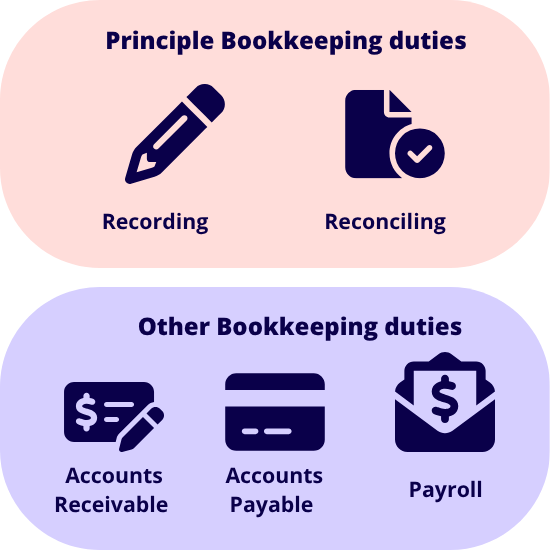TABLE OF CONTENTS
- What is payroll processing?
- Basic first steps to payroll processing
- Use STP-enabled payroll or accounting software
- Step 1: Declare your new employee
- Step 2: Set up PAYG withholding
- Step 3: Reconcile your bank accounts
- Step 4: Reconcile your PAYG
- Step 5: Issue payslips and keep payroll records
- Thinking of outsourcing payroll? Hire a bookkeeper
- How to process payroll in Reckon One
As soon as you move beyond a single owner-run business and hire even a sole employee – you’ve got payroll on your hands!
Even the smallest sole traders, who hire casual workers, will need to be responsible for processing payroll.
For many starting on the path of becoming an employer, the concept and practice of processing payroll will be alien. However, in complying with the Australian Taxation Office (ATO) and Fair Work, the steps involved should not be taken lightly.
But fret not, payroll is rather straightforward, and with a little know-how and some quality software, you’ll be a payroll whizz in no time.
What is payroll processing?
Payroll processing is the sequence of actions you need to perform to handle your employee’s pay.
The payroll process includes complying with Fair Work agreements and the ATO, ensuring the details of your employees are entered correctly into your system, right through to issuing their paychecks.
When you start in business, remunerating your staff sounds complex, but because payroll gets easier with practice, knowing the process step-by-step is infinitely helpful.
Basic first steps to payroll processing
Now, before we get into a step-by-step payroll process, let’s get our ducks in a row.
You should always refer to the rules laid out by the Fair Work Ombudsman to understand your legal obligations when it comes to paying staff, including enterprise agreements, national employment standards, and contracts.
Visit Fair Work’s Agreements page for information on how to categorise your new employee. And while you’re browsing, you should also read up on PAYG and STP. These are the cornerstones of payroll administration in Australia.
Use STP-enabled payroll or accounting software
Single Touch Payroll (or STP) is essentially non-negotiable.
Single Touch Payroll, which automates reporting methods, along with the delivery of employee information to the ATO, became mandatory for all Australian employers in 2019. Now, we’re in Phase 2 of the government’s STP rollout, which was mandated three years later, in 2022.
Fortunately, the new method has revolutionised remuneration practices for many small businesses in Australia. From salaries and wages; to pay-as-you-go (PAYG) withholding; and superannuation, when you process your payroll through STP-enabled software, all reporting is taken care of automatically.
Step 1: Declare your new employee
So, you’ve decided you’re ready for a new employee and you’ve found the person you’d like to hire—if you’re a new business owner, even the first step in ATO payroll compliance can be daunting.
Indeed, before your first pay run with your new employee, the ATO requires your new employee to sign and submit 3 forms:
- Online commencement forms.
- A Tax File Number declaration (TFN).
- Standard choice superannuation documents.
Input directly into your accounting software, these lodgments will help you work out how much tax to withhold, and how to pay them super
Step 2: Set up PAYG withholding
Before you pay your very first employee, be sure to register for PAYG withholding. Designed to withhold tax for an employee and pay it directly to the ATO on their behalf, the PAYG payroll process allows employees to meet their income tax responsibilities.
Hot tip: quality accounting or payroll software will not only help you calculate PAYG withholding, but automate it as well.
Step 3: Reconcile your bank accounts
When it’s time to reimburse your employee for their work, be sure to reconcile your bank accounts.
Reconciling your accounts means that the amount you should have paid your employee has left your bank account (and been delivered to the intended recipient).
It may sound foreign if you’re a first-time employer, but this necessary step in your payroll process is the best way to ascertain that you’re paying your employees correctly.
Step 4: Reconcile your PAYG
It’s also important to note that when you process payroll in your software, you reconcile your PAYG.
This means the PAYG you withhold is the correct amount that you’ve paid or will pay, to the ATO.
Step 5: Issue payslips and keep payroll records
As an employer, you’re required to issue payslips to employees no later than 1 day after you process payroll and pay employees.
If you do not issue a payslip on time, penalties may incur. You also need to double-check that all the employee and pay details are correct every time you process payroll.
To comprehend your legal obligations with pay and payslips, please refer directly to the Fair Work Ombudsman and the stipulations set out under Award Agreements.
You should also make sure to keep your payslip and payroll records safely and securely.
*Need help managing payslips? Get stated with our free payslip template or try Reckon payroll software free for 30 days.

Thinking of outsourcing payroll? Hire a bookkeeper
By using accounting quality software and maintaining accurate records, you can figure out PAYG, organise timesheets, calculate super and tabulate leave entitlements.
By regularly updating your software, you can also stay on top of shifting requirements from the ATO.
When considering the methods available for paying employees, investing in modern accounting software for means much of the reporting and compliance aspects of payroll processing are taken care of for you, leaving little to chance.
However, even with good software, outsourced payroll guidance from a bookkeeper will boost your confidence in managing your payroll system in-house in the future.
Outsourcing services for bookkeeping can cut your administration time and see you save money long term if your payroll software is set up properly from the get-go.
How to process payroll in Reckon One
To show you how easy it is to process a pay run in Reckon One accounting software, you can read through the payroll process here, or simply watch our video below.
While the process may differ from one solution to another, the core concepts and methodology will be very similar
For more detail on GST, GST free sales and input tax sales, please refer to the Australian Government’s GST for small business guide.























